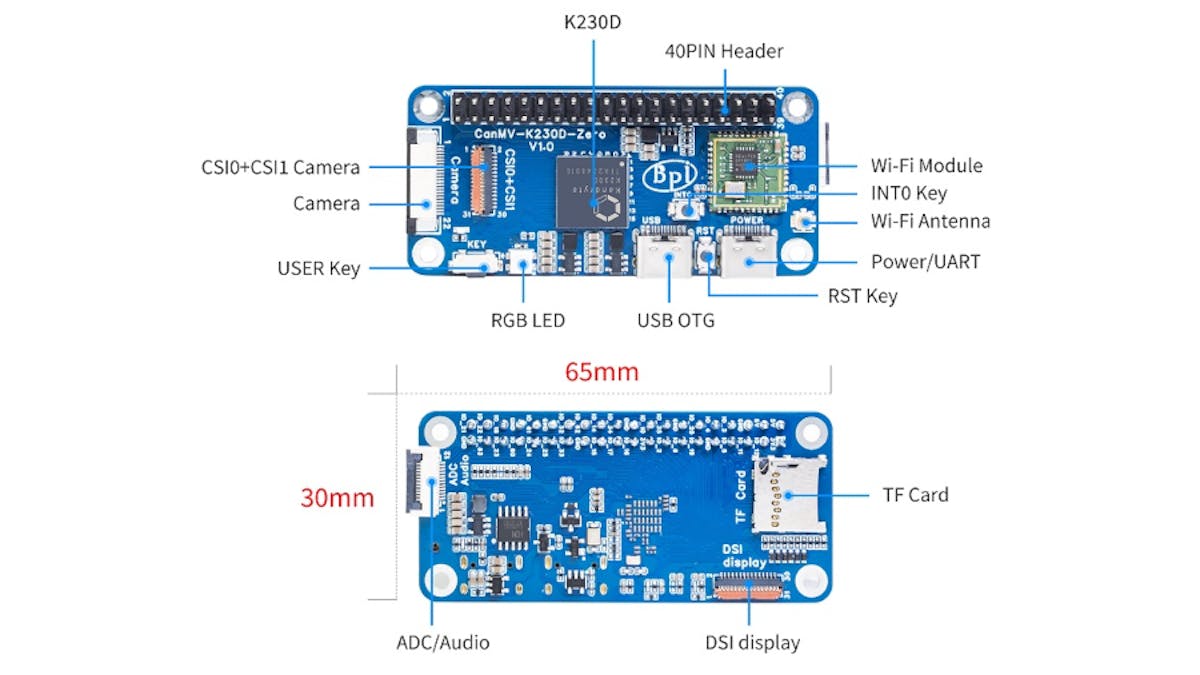Banana Pi Targets Compact, Energy-Efficient Edge AI with the RISC-V-Powered BPI-K230D Zero
Capable of real-time computer vision work thanks to a coprocessor, this dual-core single-board computer will include a MicroPython firmware.

Banana Pi has announced a new Raspberry Pi Zero-footprint single-board computer, designed specifically for low-power machine learning and artificial intelligence at the edge and supporting up to two camera modules: the BPI-CanMV-K230D-Zero, or BPI-K230D Zero for short.
"Banana Pi BPI-CanMV-K230D-Zero [is an] AIoT [Artificial Intelligence of Things] SBC [Single-Board Computer] design with Canaan K230D RISC-V chip," Banana Pi explains of its latest hardware unveiling. "This board is designed be Canaan Technology and Banana Pi['s offering to the] open source hardware community, featuring with the advanced Kendryte K230D chip."

The BPI-K230D Zero, brought to our attention by Linux Gizmos, is built around Caanan's Kendryte K230D system-on-chip, which includes two 64-bit T-Head XuanTie C908 RISC-V cores — one running at 1.6GHz and with the RISC-V Vector Extensions (RVV) 1.0, and one running at 800MHz and without RVV support. Alongside these cores is a third-generation proprietary Kendryte Processing Unit (KPU) coprocessor, designed to accelerate on-device machine learning and artificial intelligence workloads — and while the company has not shared its expected performance in operations-per-second, it claims it can hit 38 frames per second (FPS) running the YoloV5S model, 85 FPS for Resnet 50, and 670 FPS for Mobilenet V2.
The chip also includes a "3D structured light depth engine" and a vision processing unit support H.264/H.265 hardware encode and decode, designed for use with the two-lane and four-lane MIPI Camera Serial Interface (CSI) ports. There's a MIPI Display Serial Interface (DSI) output for a display, running up to 1080p, on-board 2.4GHz Wi-Fi, a single USB 2.0 On-The-Go (OTG) port for expansion, an a Raspberry Pi-style 40-pin general-purpose input/output (GPIO) header. Oddly, Banana Pi has opted to put only 128MB of LPDDR4 memory on the board — a decision that is explained away by the company's plan to promote the board for MicroPython use, rather than as a Linux system.
"Two different firmware versions are planned," the company explains. "One for Linux and the other for CanMV MicroPython. Among them, MicroPython is the software widely used by the current [Canaan] K230 users because MicroPython is simple to use."
Banana Pi is showing the Raspberry Pi Zero footprint a lot of love of late: last month the company unveiled the BPI-M4 Zero, a compact board based on the same hardware as the BPI-M4 and designed as a successor to the BPI-M2 Zero. With an Allwinner H618 quad-core system-on-chip at its heart, the BPI-M4 Zero uses the proprietary Arm Cortex-A54 processor architecture where the new model uses RISC-V cores — and there's no coprocessor for ML and AI acceleration.
More information is available on the Banana Pi forum and the official product page; pricing and availability have yet to be confirmed.
Freelance journalist, technical author, hacker, tinkerer, erstwhile sysadmin. For hire: freelance@halfacree.co.uk.

